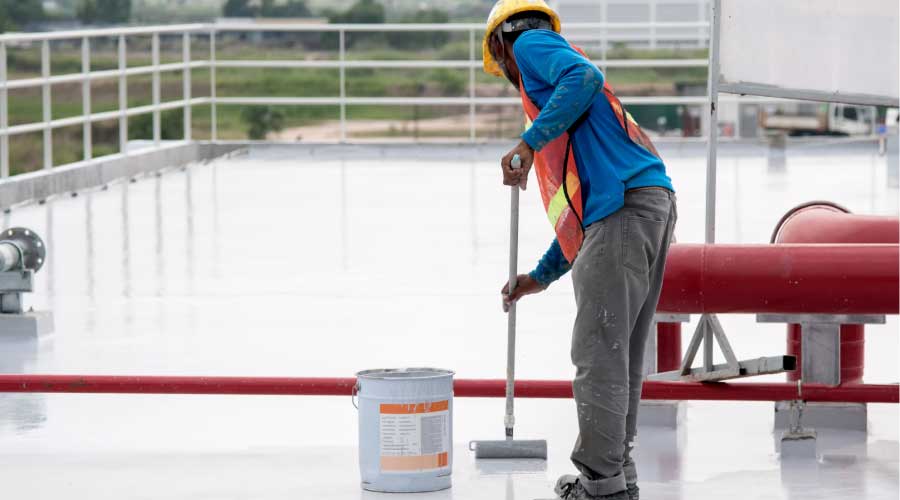Color of Roof Coating Helps With Temperature Changes
In addition to checking a coating's ability to handle temperature extremes, managers also need to pay attention to the color and appearance of a coating.
"Facility managers in colder climates may want to take into consideration that a highly reflective roof will allow snow to stay on roofs longer, (rather) than a darker color roof or coating," Ripps says. "The darker color assists in melting the snow. Think of the pavement in wintertime, where the black street will melt the snow faster than on something as lighter and not highly reflective as vegetation."
Lighter-colored coatings might be more appropriate for buildings in the Southern United States, where the sun relentlessly pounds roofs most of the year, says Joe Marzahl of Firestone.
"If they are in extremely hot climates, I think it's more likely they would want to go with the white version," he says. "But if you are in Northern Canada, and the roof is white all the time with snow anyway, it doesn't make a difference."
Coating issues to consider
Often, managers in the market for roof coatings look for a "miracle in a can," Skinner says, which more often end up turning into roof coating disasters. Before purchasing a product and embarking on a project, managers need to consider all options.
"Too many times, I've spoken to facility managers, and they've said they have people come out and indicate that roof coatings will solve their problems," Skinner says. "When you're talking about roofing, you have to start from your substrate. Typically, you're talking about a roof that's already been down for a period of time. It's probably showing some weathering and aging. It might have leaks, (or) it might have some hidden problems."
One major challenge for manufacturers is educating managers on the differences among available coatings.
"Some managers feel all coatings are the same, and they're not," Martucci says. "There are different additives and formulas that can improve certain attributes. For example, one additive will improve (ultraviolet) resistance. Another will improve cold-weather adhesion.
"Another myth is 'The thicker the coating, the better.' You will often get better results using a thinner, high-quality coating than a thicker, cheaper coating. It's not all about thickness. It's about the quality of the actual coating and resistance. One of the easiest indicators of a good coating is its percent solids content. The lower the solids content the more shrinkage will occur during the curing process. To get full protection, some cheaper coatings actually need a third coat, whereas the higher end coating with a high solid content may only require two."
Related Topics:













